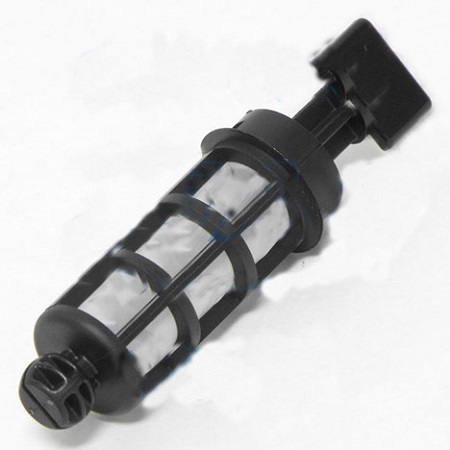The desiccant myth
By Richard Hawkins, MACS contributor
There is a myth that exists involving A/C service work and driers that seems to come up from time to time.
I have encountered it when handling tech calls and have seen it come up in A/C forums. That myth is: moisture can be removed from the desiccant in a drier and it can be restored to its original moisture absorption capacity, enabling the drier to be reused, by pulling a deep vacuum for an extended period.

First, speculation on how the myth may have come about and then an explanation why it is a myth.
1. Pulling a vacuum is associated with removing moisture from an A/C system. When a system is open for service work, it contains ambient air which of course contains moisture (the amount depends on the humidity level). When a vacuum is pulled on a system, most of the air along with the moisture that is in it is removed. There is universal agreement on this. Once the vacuum pump reaches its maximum level, there seems to be considerable debate about the amount of additional moisture (if any) that can be removed from a system. Depending on who you ask, it is possible to get varying answers. There is no intent in this article to open that up for debate. We will just focus on the desiccant.
If you look at a chart that shows the boiling point of water at various vacuum levels, it illustrates that vacuum levels have a huge effect on the boiling points. For example, a vacuum level of 29.12 inches of Hg reduces the boiling point down from 212°F to 72°F (which is about room temperature). Please see picture #1. NOTE: Hg is the chemical symbol for Mercury.
Picture #1: A chart which illustrates the effect that vacuum level has on the boiling point of water. The column on the far left is the boiling point. The 4th column shows the vacuum levels expressed in inches of Hg. This is at sea level.

Taking this a step further, you may recall in high school science class where the teacher took one of those thick “bell jars” and placed a container inside of it containing a small amount of water. Then a vacuum pump was connected to the bell jar. Then the vacuum pump was turned on and when the vacuum reached a level of about 29 inches of Hg, you witnessed water boiling at room temperature.
Compiling all of that together, one might think that pulling a deep vacuum on a system (or directly on a drier as I’ve had some people tell me they might do) would remove moisture from the desiccant in the drier (just as that vacuum pump boiled the water in that bell jar). However, it just does not work like that. Please see picture #2.
Picture #2: Water in a bell jar under a deep vacuum boiling at 22°C. 22°C converts to 71.6°F.

2. Now to explain why and dispel the myth: As outlined in last week’s article, a typical receiver drier or accumulator might hold about 1.5 to 3 teaspoons of water. So why won’t pulling a deep vacuum on that drier remove the moisture from the desiccant? Because the desiccant will not turn loose of it unless it is heated when the vacuum is pulled. Desiccant can have the moisture removed (regenerated as it is called in the desiccant industry) but the moisture removal will not occur at room temperature. It has to be heated and heated to a high temperature. According to a supplier of desiccant, the type used in mobile A/C driers must be heated to about 575°F to regenerate it.
That kind of temperature just is not feasible with an A/C drier. First it would be difficult to get it that hot, and even if that temperature was reached it would damage the material the desiccant bags are made of. Also, any plastic components present in driers would be compromised. The extreme heat would also cause issues with the refrigerant oil, which the desiccant is soaked with, and which also sits in the bottom of a drier. The oil would suffer thermal breakdown and it would thicken up, coat the desiccant beads, and hinder their ability to absorb moisture.
Final words on driers:
- When reassembling an A/C system, the drier should remain capped until just before installation. If replacing a desiccant bag, it should remain in the sealed package until just before installation. This is to minimize the amount of time that the desiccant will be exposed to ambient air which of course limits its exposure to the moisture present in the air.
- If replacing just a drier, the amount of oil which is being removed in that drier must be replaced in the system. Draining the oil and measuring it will not work, because a large quantity of the oil cannot be removed. That is because the desiccant acts like a sponge and retains a lot of oil. Component oil replacement amounts are often listed with specific vehicles by the various information systems.
- If a receiver drier or accumulator arrives at your shop without plugs (i.e., it has been exposed to the atmosphere) you should ask your parts supplier to replace it with one that has not been compromised.
MACS is a community of like-minded individuals working to cool what moves you! Join MACS as a member to enhance your career with solid technical content.
Leave a Reply